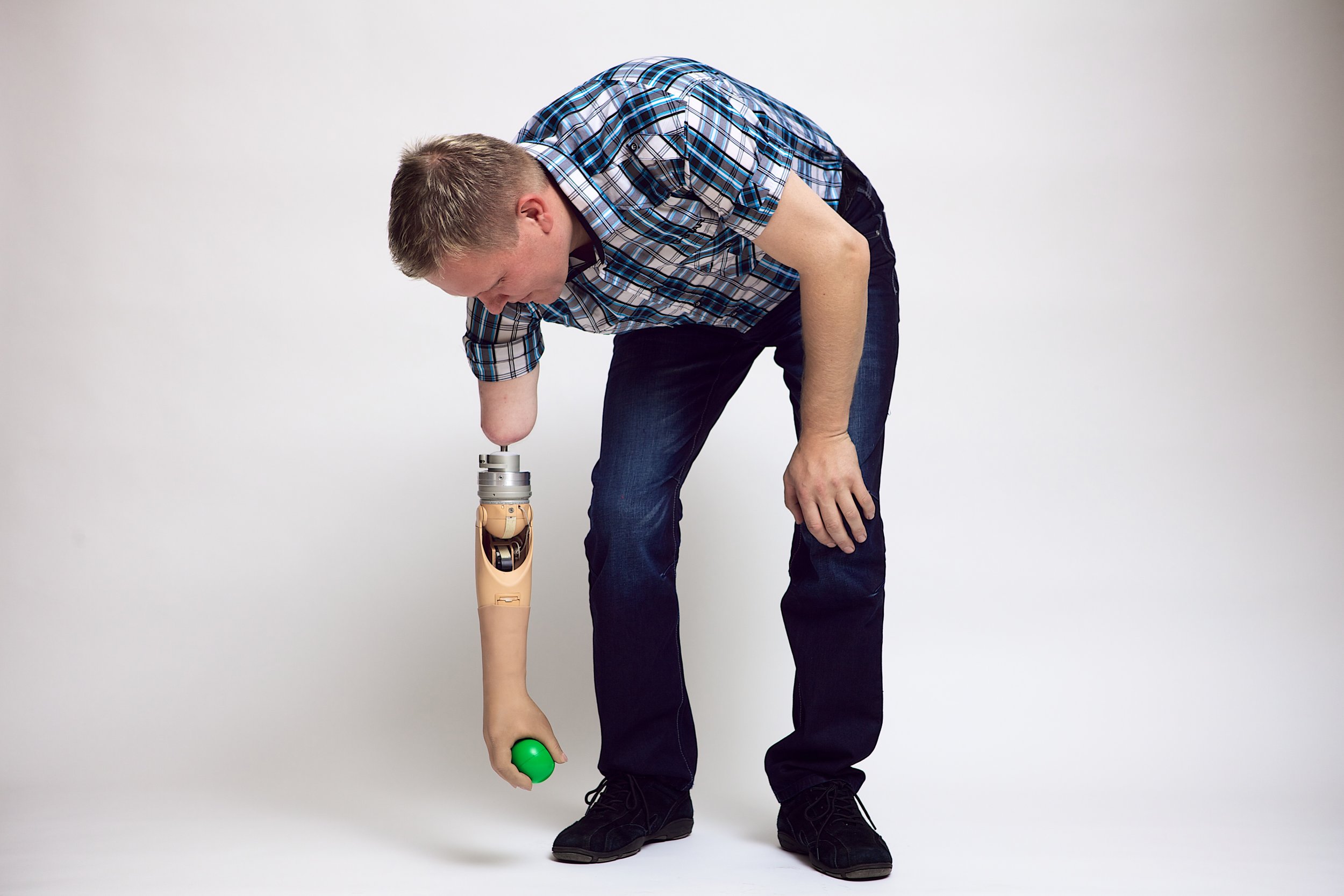
With his new prosthetic arm, Magnus, a truck driver from northern Sweden, can do things he hadn't imagined possible after his arm was amputated in 2003. He can perform his job in any weather, maneuver a key to unlock a door, pick up an egg without breaking it and drive a snowmobile to go ice fishing in the winter.
The arm works so well, Magnus tells Newsweek, that it feels more "like my old arm; it's not like a tool, it's not like a machine."
Magnus and his arm are the subject of a new study, published Wednesday in the journal Science Translational Medicine, by Max Ortiz Catalan, a biomedical engineer at Chalmers University of Technology in Gothenburg, Sweden, along with Bo Håkansson and Rickard Brånemark. (Magnus's last name was withheld to protect his privacy, researchers said.)
Ortiz Catalan and his team tested the long-term viability of a prosthetic arm that is attached to the bone, muscles and nerves, as opposed to the more traditional procedure of using sockets to connect prosthetics to the body and surface electrodes to control them.
According to the study, in January 2013 an "osseointegrated human-machine gateway" (OHMG) system that included seven electrodes was surgically implanted in Magnus's arm, which had been amputated above the elbow in 2003 after an operation for a broken arm revealed a cancerous tumor. After six weeks of recovery, Magnus was fitted with a prosthetic arm connected to the OHMG.

Magnus's new arm was built using osseointegration—more specifically, Osseointegrated Prostheses for the Rehabilitation of Amputees (OPRA)—in which a fixture is implanted directly into the bone and serves as the base for a prosthetic device. Ortiz Catalan and his colleagues also implanted neuromuscular electrodes with Magnus's OHMG to allow for improved control of the arm under a wide range of environmental conditions.
Brånemark, one of Ortiz Catalan's co-authors and his doctorate adviser, is an expert in the field of osseointegration and led the development of OPRA. As a surgeon at Sahlgrenska University Hospital at the University of Gothenburg, Brånemark performed the surgery to implant Magnus's OHMG.
"The idea of using the biological control system that is nerves and muscle to control a prosthetic device has been around for a long time," Ortiz Catalan tells Newsweek, since the 1960s and '70s. Even if you lose a limb, he explains, the nerves are still there and could receive signals. But this is "the first successful implementation of neurocontrol using implanted electrodes that a patient is using at home," he says, and the first shown to function over an extended period of time, according to the study.
Previous prosthetic devices have used sockets to connect to the body and electrodes placed on the surface of the skin, both of which came with limitations, says Ortiz Catalan. Pressure on sockets caused sores, blisters and pain, as well as a limited range of motion, according to a Chalmers University press release about the new research.
Surface electrodes could not function in extreme cold or heat, Ortiz Catalan says, nor with sweat, according to Magnus. The implanted electrodes allowed the patient to control the prosthetic arm with less effort and more precision, the Chalmers press release says.
"It's very straightforward because we are using the same neural paths and muscles that were used before the amputation for prosthetic control," Ortiz Catalan tells Newsweek.
"The new arm has changed [my] whole lifestyle because I can use the prosthetic arm every waking hour," says Magnus, who thought he might have to quit his job when he was using a previous prosthetic with surface electrodes. He can do most things except lift heavy boxes, he says, and has even driven a snowmobile to go ice fishing in freezing cold weather.
The implant has a "bidirectional interface," according to the press release, which means that electrodes can send information not only from the brain to the arm but also from the environment to the brain. For more than a year, the researchers worked with Magnus in the lab to test ways to translate external sensory information into electrical cues that can be passed on to the brain, says Ortiz Catalan. For example, indicating to the brain the angle and position of the hand, or what kind of surface it's coming into contact with.
The team has yet to implement the new technology for use at home in everyday life—Magnus has had access to this function only in the lab thus far—but Ortiz Catalan says it has worked well and implementing it outside the lab would be "very feasible." This is one of the next steps on his team's agenda.
Since the OHMG system has shown positive results in one patient, Ortiz Catalan and his colleagues plan to begin a clinical study with a larger group of patients at Sahlgrenska University Hospital. Osseointegration, which was pioneered by Swedish researcher Per-Ingvar Brånemark (Rickard's father) for dental implants in the 1960s, is already in use with artificial limbs in several countries in Europe as well as Australia and Chile and is in the approval process with the U.S. Food and Drug Administration, Ortiz Catalan says. The FDA does not confirm information on which applications it is considering, a spokeswoman told Newsweek.
"That network that we've established already will make dissemination of this technology faster," says Ortiz Catalan, who predicts that prosthetic devices like the one Magnus has been using will become available outside of Sweden in about two years.
"Now that we have access to stimulate [the] neuromuscular system, it opens up opportunities to do a lot of new things," Ortiz Catalan tells Newsweek. But "this is not just a research project," he says. "We're providing a solution for the patient" and giving the patient "more functionality and a better quality of life."
Uncommon Knowledge
Newsweek is committed to challenging conventional wisdom and finding connections in the search for common ground.
Newsweek is committed to challenging conventional wisdom and finding connections in the search for common ground.
About the writer
Stav is a general assignment staff writer for Newsweek. She received the Newswomen's Club of New York's 2016 Martha Coman Front ... Read more
To read how Newsweek uses AI as a newsroom tool, Click here.








